10 Best Drills To Improve Your Consistency
Golf Monthly has joined forces with Callaway Golf to help lower your scores with these simple consistency drills
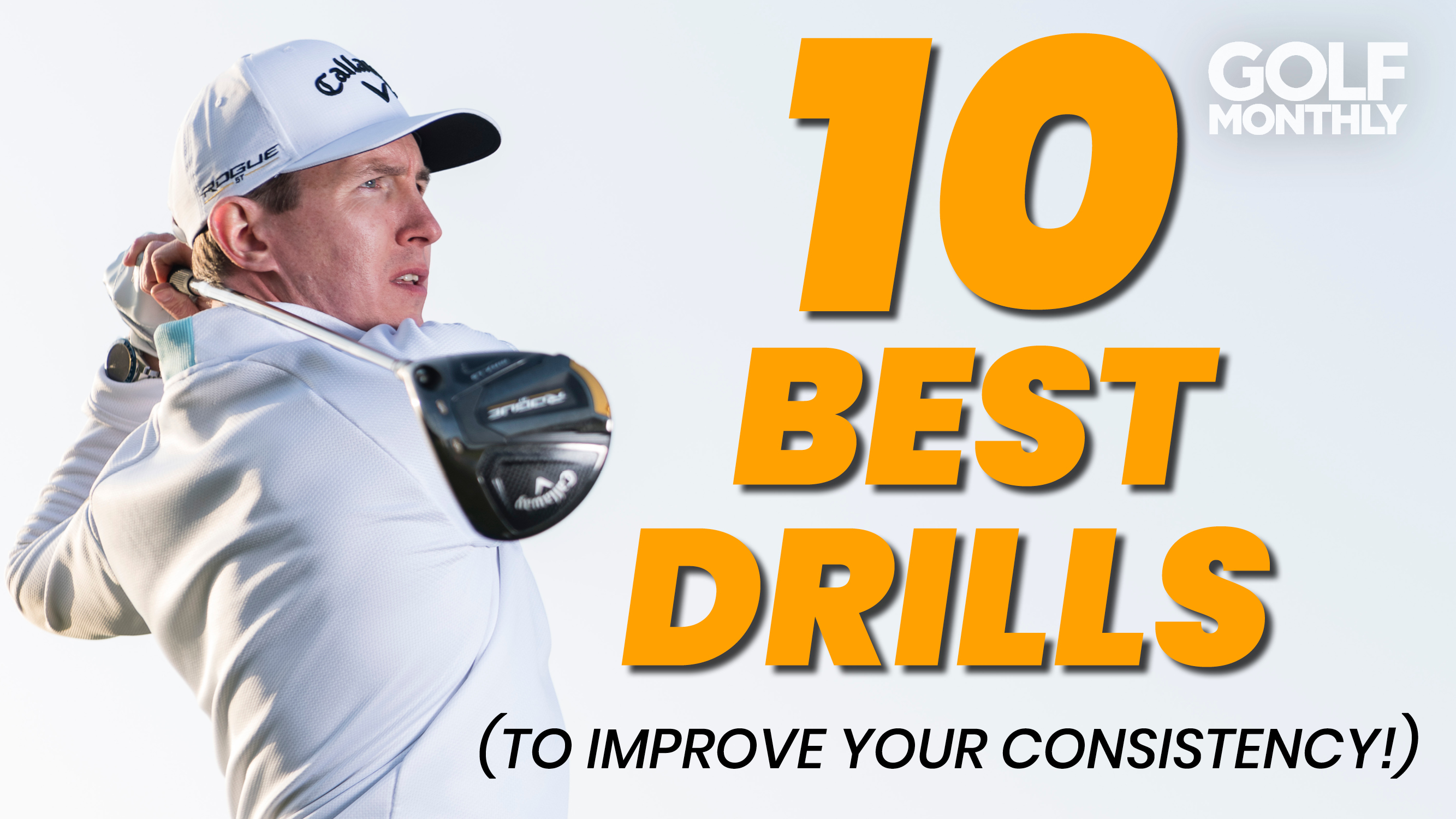

Most who have ever picked up a club will likely have experienced the highs of shooting a good score only to be brought back down to earth next time out. It’s one of the aspects of golf that makes it so infuriating. However, in the video and article below, PGA pro Ben Emerson aims to address the inconsistency that plagues golfers.
With a selection of his favourite drills covering every aspect of the game from driving through to putting, and some handy tips on how Callaway's current equipment line-up can help, this is your Keys To Consistency series to help you shoot better scores more often.
Takeaway drill

Imagine the alignment stick is a plane of glass and try to miss it when taking the club away
It’s so easy for golfers to get out of sync early in the swing. When that happens, compensations have to be made that result in inconsistency of strike and a loss of distance and accuracy. As Ben demonstrates with one of his golf takeaway drills in the video above, place an alignment stick in the ground a few feet behind you in line with your heels. Imagine it’s a pane of glass and you need to avoid it.
If done correctly, the club will pass without trouble, but if you’re still struggling with an inside takeaway, you’ll clatter the stick. There are a couple of checkpoints to look out for. When the club is parallel to the ground, is your trail forearm on top of your lead in the takeaway? And does your clubhead match your spine angle? The video with this article explains exactly what to look out for. Nail these positions and you’ll be ready to play some consistent golf.
Gear Insight: Ball Striking Consistency
Much of the research and development that goes into modern clubs is designed to help golfers with their consistency. If you're struggling to regularly find the sweet spot with your irons, consider something like the Callaway Rogue ST pro irons. Not only have they been designed to look inviting down behind the ball but the tungsten weighting in the head should help deliver a stable ball flight while minimising the loss of ball speed on mishits.
Over the top drill
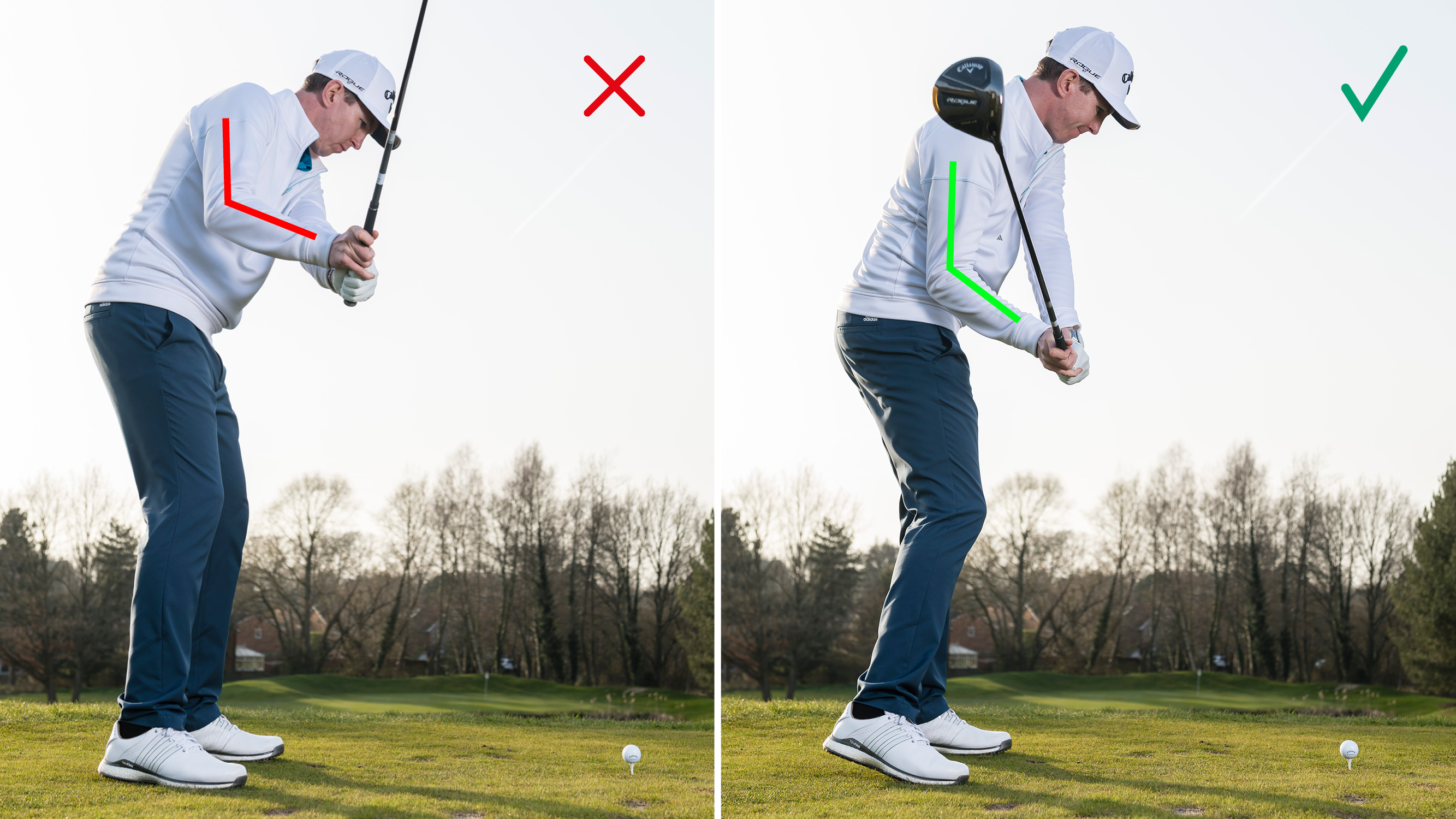
Swinging over the top (left) leads to slicing. Try this pause drill to hone a more efficient move (right)
This is such a common swing fault among golfers and is the leading cause of slicing. The upper body and the shoulders are too active and take over, resulting in an over the top golf swing. To start on the journey to a more on-plane swing, try the pause drill Ben demonstrates in the video above.
Swing to the top and pause, allowing everything to set before the lower half initiates the downswing - this will drop the club on a much better path. It can also become part of your pre-shot routine to give you a feel on the course you can rely on.
Gear Insight: Straighten Your Slice
For slicers, the ultra-forgiving Callaway Rogue ST Max D driver is designed to help you straighten up your ball flight. This is thanks to the built-in draw bias as well as the larger footprint behind the ball that inspires confidence. At address it also sits a hair closed, again helping golfers avoid the right side of the course.
How to hit a 3-wood off the tee

Don't try to scoop the ball in the air with a 3-wood. Instead, move your weight through the shot, hitting down on it slightly
Even the best drivers misfire, so it’s really important to have a reliable back-up shot in your locker. This is why it pays to devote some practice time to learning how to hit a 3-wood off the tee. The reason people struggle to master this shot is because they tee the ball up too high.
Instead, nudge it down a little as if it’s sitting perfectly on the fairway and move the ball position slightly back in your stance. From there, move your weight through the shot so you don’t lean back. When you finish, all the weight should be on your lead side.
Gear Insight: Finding Fairway Woods
Offering the right blend of distance and accuracy, a reliable fairway wood is a game-changer for many amateur golfers. The Callaway Rogue ST Max Fairway Wood features Callaway's A.I. (artificial intelligence) Flash Face that has been designed to deliver the perfect blend of launch, spin and ball speed, while also being extremely forgiving.
Chipping drill
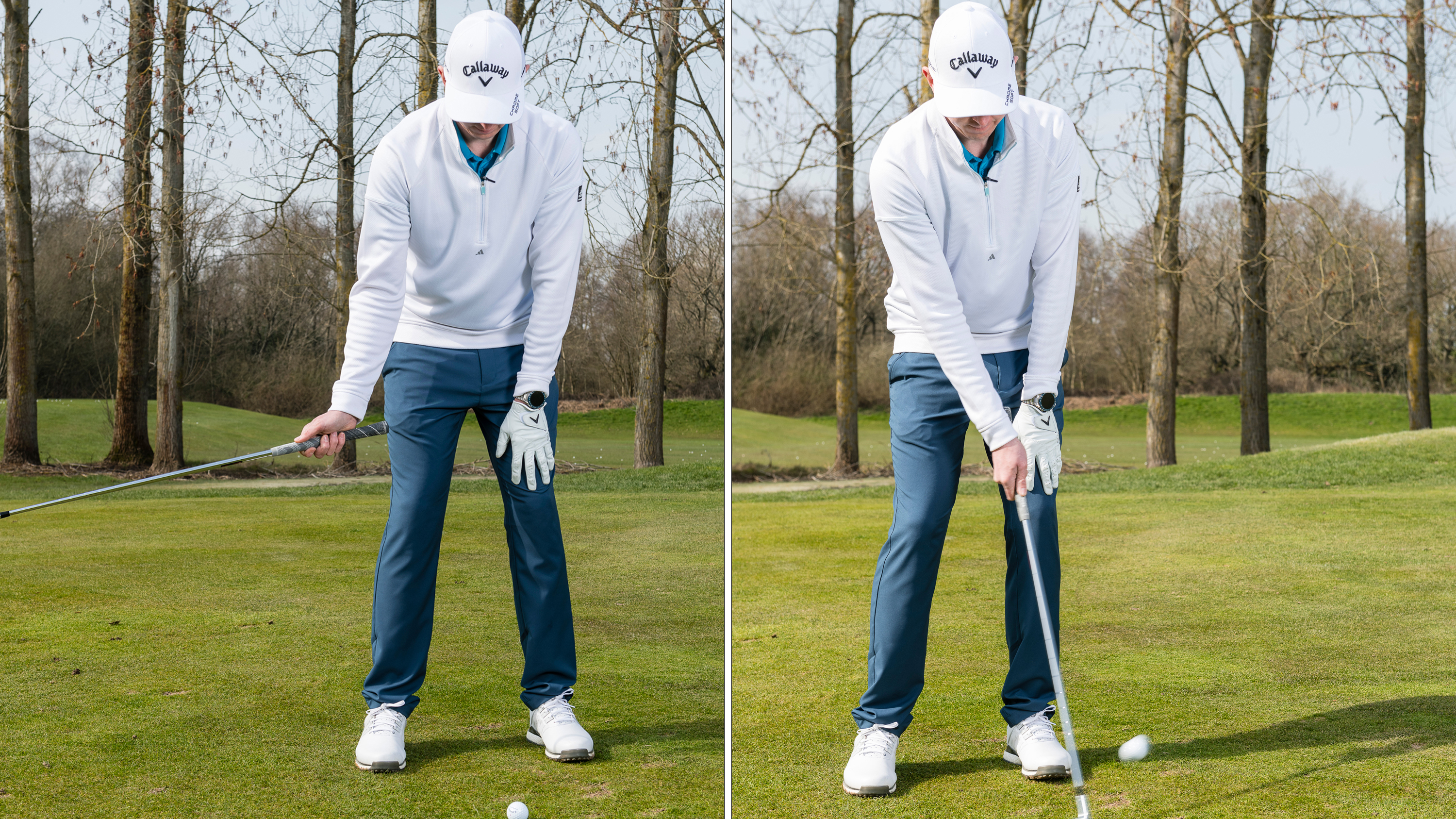
Chipping one-handed will help you develop a better release pattern and use the bounce more effectively
Strike is king when it comes to chipping and there are two common release patterns among club golfers that make it difficult to chip with any sort of consistency: the block release and the early release. To improve your pattern, try this chipping drill.
First, take your lead hand off the club and place it on your thigh, as Ben demonstrates. Make some swings and try to brush the turf. You’ll notice you’re using the bounce far more efficiently. Start hitting shots one- and two-handed and recreate this feeling to improve the quality of strike and your ability to get up and down.
Gear Insight: Short Game Consistency
For many golfers, getting up and down more often is the fastest route to shooting lower scores. Of course, the right equipment can make a huge difference. This is where the Callaway Jaws Full Toe wedge comes in. The combination of the high-toe design and Full Face grooves should make this forgiving across the face, producing consistently high levels of spin and feel even on off-centre strikes.
Compress your irons

Rehearse what it feels like to get into an efficient impact position then try to recreate that when swinging
A lot of people struggle with the concept that you need to hit down on the ball to get it to go up. As a result, golfers try to scoop it, which leads to a loss of consistency and distance. Take your set-up and then rehearse an efficient impact position. That is, the hips have opened slightly, the hands are ahead of the ball and the weight is moving forward.
Rehearse that repeatedly before doing some awareness training. Swing to the top and then try to return to that new impact position. Don’t be afraid to exaggerate as it will help you ingrain the move needed to compress your irons. It'll also help you learn how to play the low punch shot, which is handy to have in your locker. It’s a feel that can also be relied upon on the course once it has become a staple of your practice routine.
Find your tempo
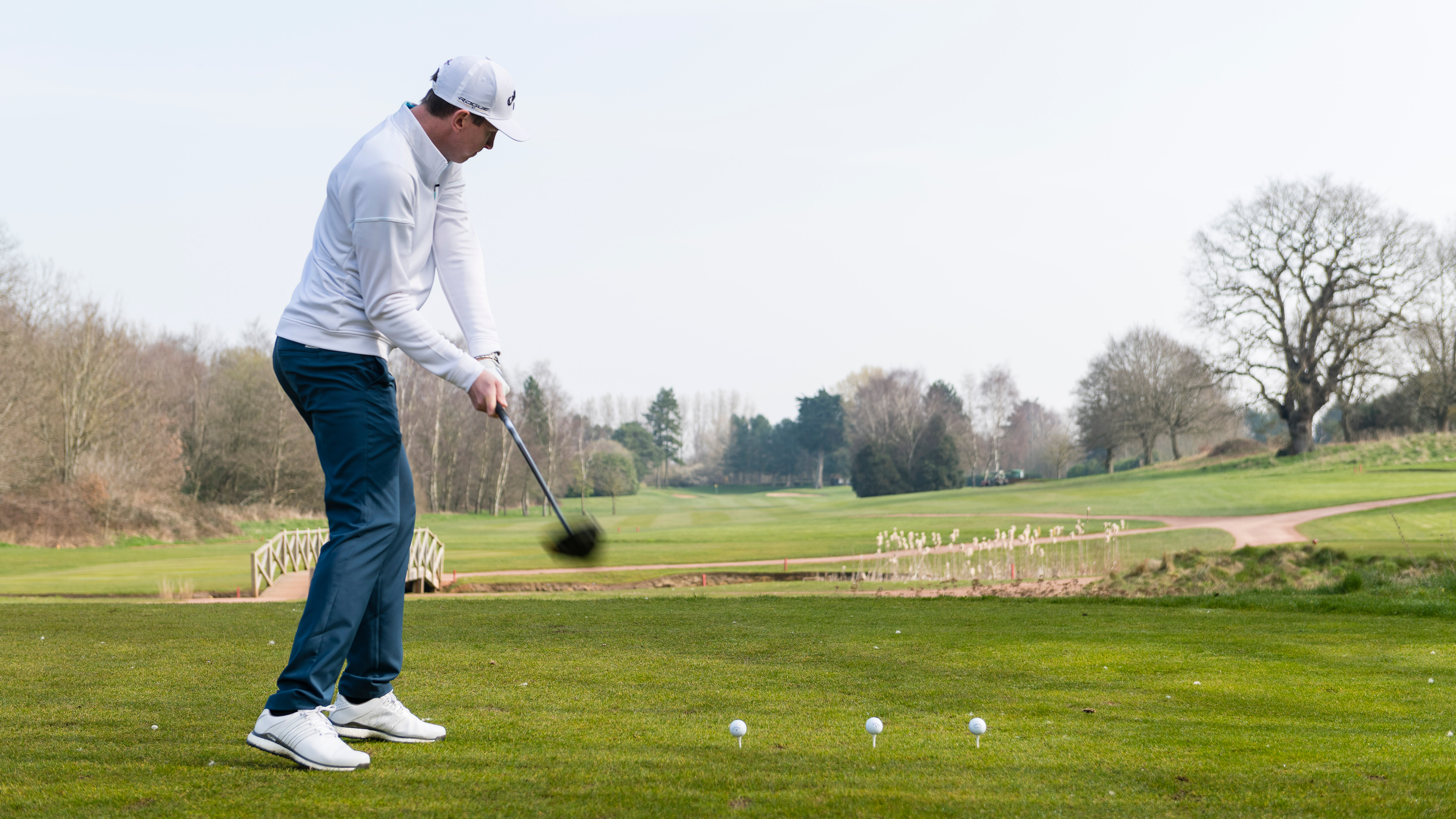
This three-ball drill will help you find and hone the perfect tempo for your swing
Having a good rhythm can be the bedrock of a good swing. But there’s no one-size-fits-all solution. So, here’s a simple tempo drill to perfect your swing rhythm. Set up three balls as shown above. On the first one, swing as slow as you can with your driver while maintaining a ball flight before moving on to ball two where you want to get the club moving as fast as you can.
Once you’ve done that, try and find a happy medium that suits you when hitting the final ball. Spend five or ten minutes working through this drill when you practise and you’ll start to hone your perfect swing rhythm.
Squaring the putter up
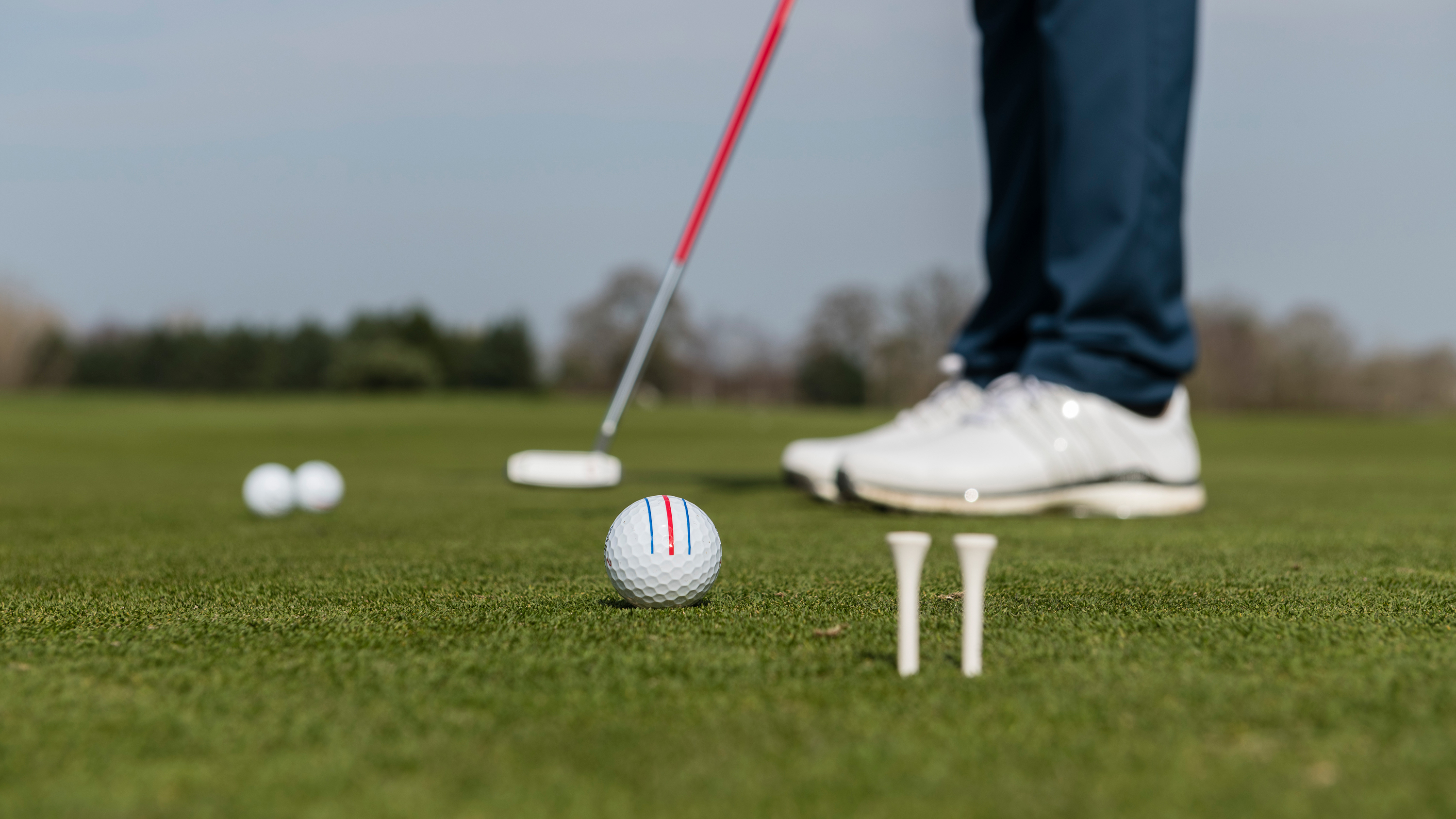
Line the ball up with your chosen target and work on getting it to roll end over end as above
This is one of my favourite putting drills. At the start of your practice routine, use the alignment aid on your ball to line up to your target - which could be a hole or a tee in the ground - and try to get it to roll end over end. If you leave the blade open or closed, you’ll quickly notice it doesn't roll smoothly.
Gear Insights: Putter Technology
For anyone struggling on the greens, a putter with a high MOI design and optimal centre of gravity will definitely help. The new Odyssey Eleven putter is designed to help golfers improve the consistency of their putts by delivering a more stable clubhead through impact and a stronger roll, more often.
In addition, the above drill is one in which the Callaway Triple Track technology comes into its own. It uses Vernier Hyper Acuity - the same tech used to land planes on aircraft carriers - which makes it 27% easier to line putts up accurately. Since its launch, some of the world's best have put their trust in this alignment system that should help you consistently start the ball on line and shave shots off your scores.
Fix your posture
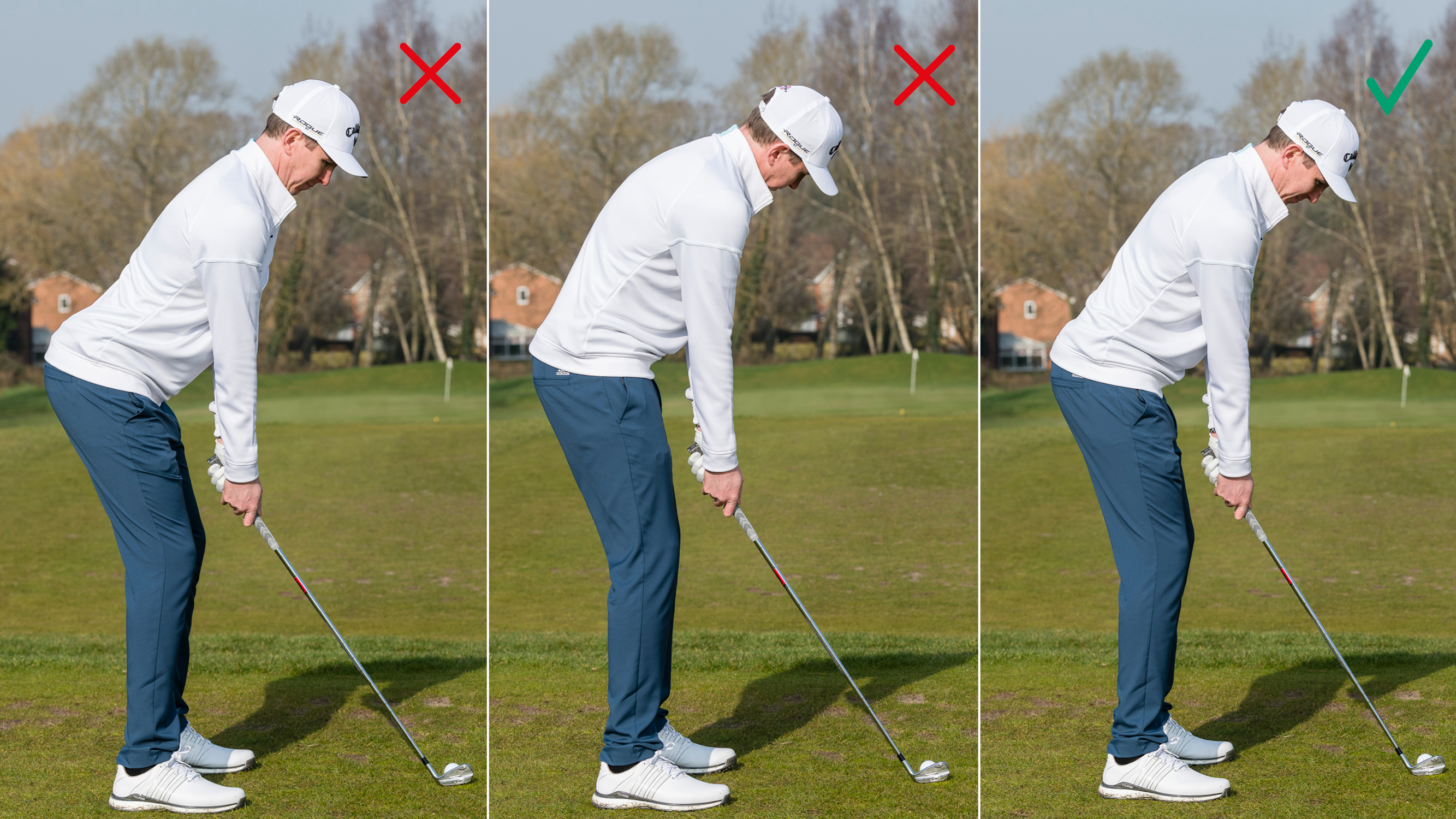
A poor posture makes it harder to play consistently good golf. Take Ben's advice below and reap the rewards
If you look on tour, the world’s best have a really neutral posture with their hips sat back and the spine angle nice and straight. By contrast, amateurs tend to suffer from two common posture faults: the ‘C’ and ‘S’ shape. The former is a lazy position where the head tucks in and the back rounds out to form this curved shape. In the ‘S’ posture, the shoulders look like they are being squeezed together to create an inward arc in the back.
Learning how these positions feel will help you fix your golf swing posture. Take a club and hold it across your shoulders as Ben demonstrates in the video above. When you’ve done that, hinge your hips and squeeze your shoulders together to get a sense of what the ‘S’ posture feels like. Go from there into the ‘C’ shape, rounding out your back and tucking your head into your neck.
With your senses more attuned to these positions, work on finding the middle ground. With a flatter back, you’ll quickly notice how much easier it is to rotate around your body throughout the swing.
Accelerate through the shot
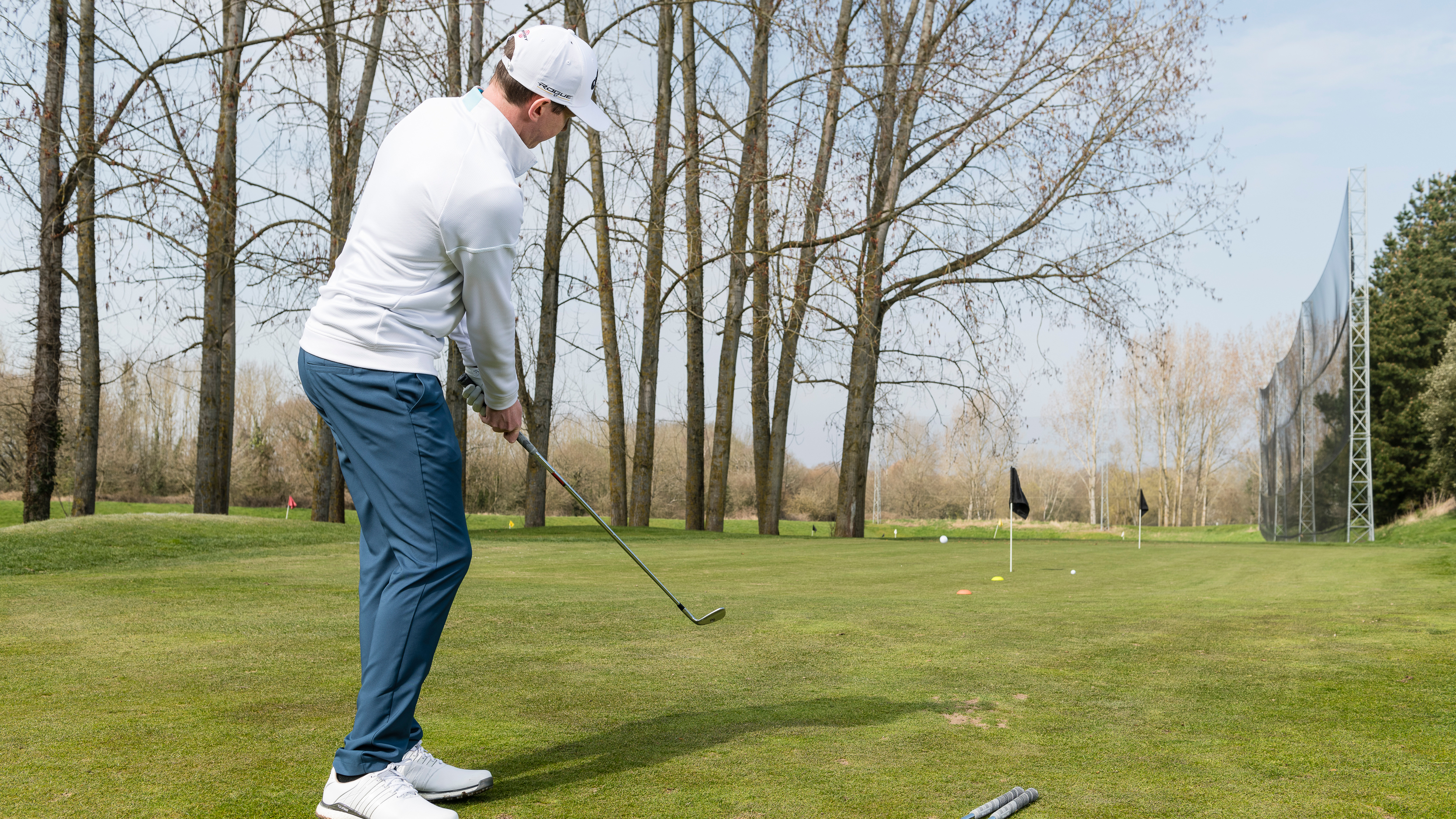
It's vital to accelerate through impact when chipping to create spin and better control distance
A lot of golfers who struggle with chipping tend to decelerate into impact. The backswing gets long, meaning speed is lost in the downswing. So let’s flip your bad habits. It sounds simple but work on shortening your backswing and accelerating through to the target. It won’t come easy initially, but in time, you’ll learn how to spin the golf ball and control distance through better strikes.
Gear Insight: Spin Control
If you are looking to improve your short game, a high quality, premium golf ball should provide the combination of spin and feel that makes a difference. Through its new Hyper Elastic SoftFast Core, the new Callaway Chrome Soft X delivers high levels of spin when chipping and pitching. It's one of the reasons Jon Rahm uses this model out on Tour.
Get the basics right
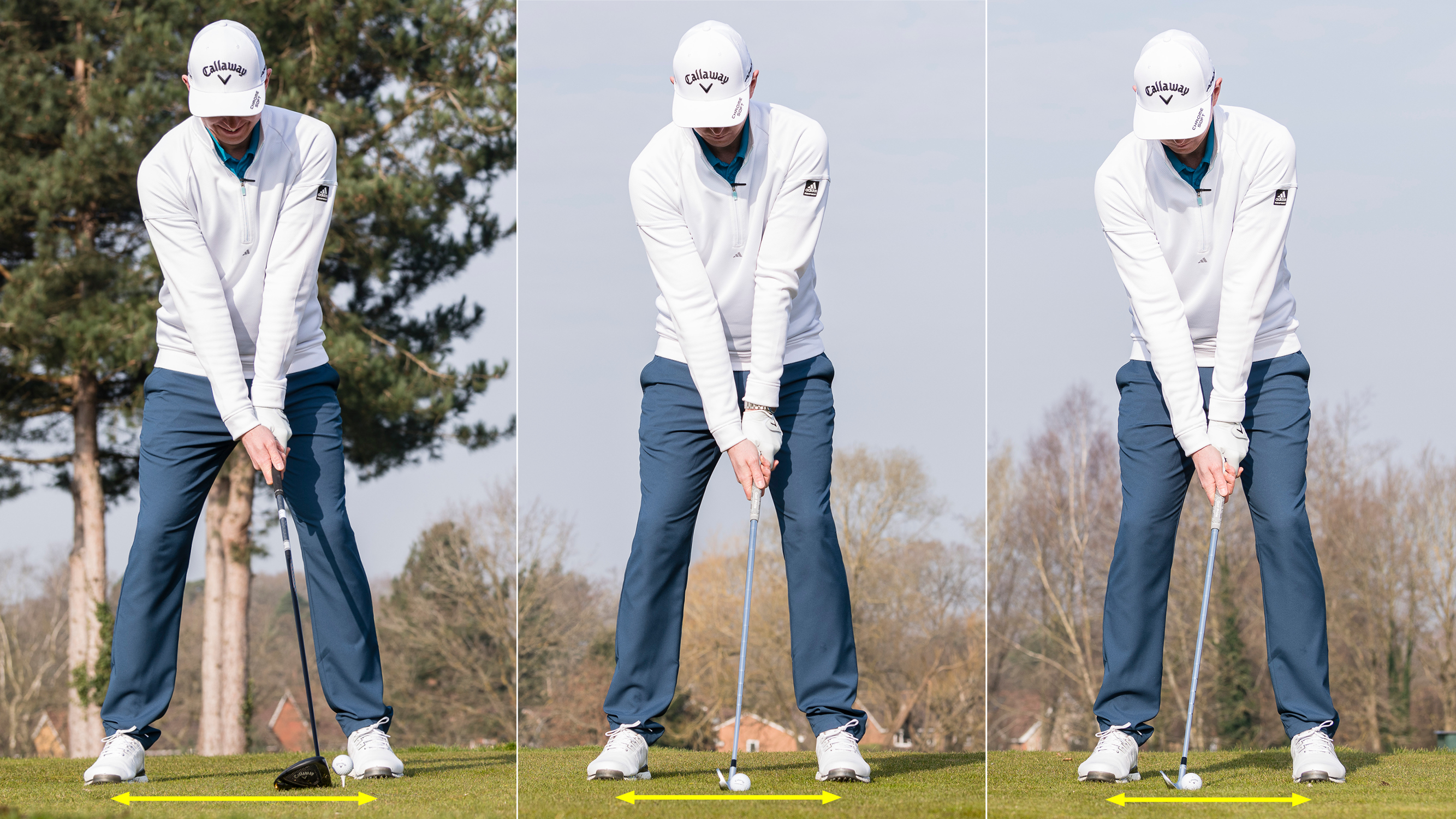
As a general rule, the longer the club, the wider your stance should be
Getting the basics right is absolutely essential to play your best. That means knowing how wide your stance should be on a given shot with a certain club. The basic rule is the longer the club, the wider the stance. This is because the extra shaft length creates more clubhead speed and to control that, you need the added stability of a wider base.
With a driver, your feet should be a little more than shoulder width apart. When working down into irons, just shoulder width works fine, and as you approach the green it can become narrower still as this part of the game is all about finesse.
Subscribe to the Golf Monthly newsletter to stay up to date with all the latest tour news, equipment news, reviews, head-to-heads and buyer’s guides from our team of experienced experts.

Location: Sand Martins GC
Ben’s modern approach to golf coaching has seen him become one of the most sought-after coaches in the country and teaches none other than Robbie Williams. His honest, modern and fun style of coaching has help thousands of golfers of all ages and abilities and he has been coaching for over 20 years.
Advice for practice:
Start with slow, small swings. If you can’t do it small and slowly there is not a hope in hell of doing it at full speed with a full swing! In other sports such as rugby or martial arts they slow learn new moves/plays before making them at full speed.
Teaching philosophy:
‘Why guess when you can access’ Ever new student goes through a full TPI movement screen, 3D motion capture and pressure plate analysis as well as TrackMan and 2D video analysis. Coaching is based on facts and not guess work.
Most common problem:
A lack of clubface understanding and awareness. I get golfers to aim the clubface directly at the target and get them to make a slow swings and deliver the club to the ball with an open face, then repeat the same thing again but with a closed face, followed by one at the target. Giving them full awareness based on feelings errors to find a happy middle ground.
-
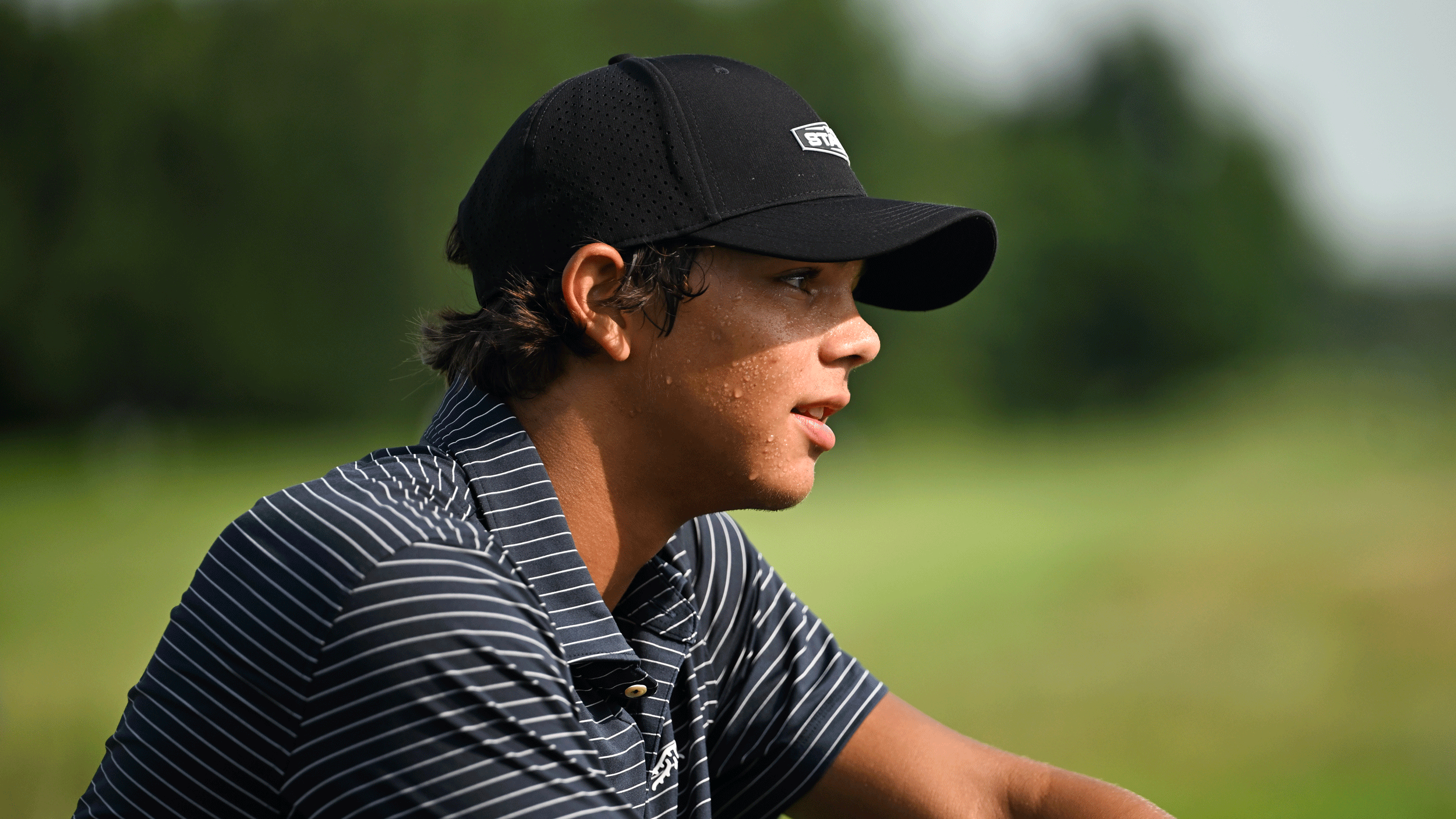 Charlie Woods Shows Powers Of Recovery In Front Of Dad Tiger During First Two Rounds Of Junior Orange Bowl
Charlie Woods Shows Powers Of Recovery In Front Of Dad Tiger During First Two Rounds Of Junior Orange BowlWoods has made a solid start to the four-day tournament in Florida after twice fighting back from tough positions at Biltmore Golf Course, Coral Gables
-
 L.A.B. Golf OZ.1i vs TaylorMade Spider 5K-ZT Putter: Read Our Head-To-Head Verdict
L.A.B. Golf OZ.1i vs TaylorMade Spider 5K-ZT Putter: Read Our Head-To-Head VerdictTaylorMade have joined the battle of zero torque putters with the Spider 5K-ZT, but L.A.B. Golf is the pioneer of zero torque technology. Let's see how the Spider 5K-ZT matches up against the L.A.B. OZ.1i